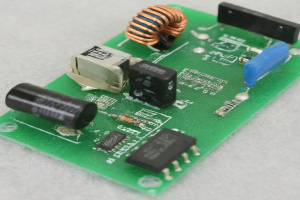PN Junction Diodes or PN Diodes are Basic Component In Electrical Engineering / Circuits in Modern Electronics. PN Junction Diodes are Widely Used For Switching Operation For Their Low Operating Voltage Levels I Circuits. PN Junction Diodes are Used in Rectifiers, Clipper ,clamper circuits for Signal Modification In Analog Electronics.

Definition
An interface or border between two types of semiconductor material—the p-type and the n-type—within a semiconductor is called a P-N junction.
Doping is the process that creates the P-N junction in a semiconductor. There are too many holes on the semiconductor’s p-side, or positive side, and too many electrons on its n-side, or negative side. The following section provides a more thorough explanation of the doping procedure.
How P-N Junction Formed in Diode
A grain boundary created by using distinct semiconductor materials to create a P-N junction would prevent electrons from moving from one side to the other by scattering electrons and holes; hence, doping is used. With the aid of this example, we will comprehend the doping procedure.
Let’s look at a thin semiconductor sheet of p-type silicon. A modest quantity of pentavalent impurity will cause some of the p-type silicon to change into n-type silicon. Both the p-type and n-type regions, as well as a junction between them, will now be included in this sheet. Diffusion and drift are the two types of processes that occur once a P-N junction forms.
The two sides of a junction have different concentrations of electrons and holes. Both the electrons from the n-side and the holes from the p-side diffuse to the n-side. A diffusion current is created across the connection as a result of these.
Additionally, an ionized donor is left on the n-side, which is stationary, when an electron diffuses from the n-side to the p-side. A layer of positive charge forms on the n-side of the junction as the process progresses. Similar to this, a layer of negative charges forms in the p-side of the junction when a hole moves from the p-side to the n-side, leaving an ionized acceptor on the p-side.
The depletion region is the area of positive and negative charge on either side of the junction.
An electron on the p-side of the junction shifts to the n-side of the junction as a result of this electric field. We call this motion the drift. Here, we can observe that the drift current is flowing in the opposite direction from the diffusion current.
Operation Of PN Junction Diode
PN Junction Diode Is Operated in Two Ways.
Forward Bias
When the p-type is linked to the positive terminal of the battery and the n-type to the negative terminal, the P-N junction is referred to as being forward-biased. When forward bias is applied to the P-N junction, the built- in electric field at the junction and the external electric field point in opposing directions. When the electric fields combine, the resulting electric field has a magnitude that is smaller than the built-in electric field. This leads to a thinner and less resistive depletion region. When the applied voltage is substantial, the resistance of the depletion region becomes insignificant. In silicon, when the voltage is set at 0.6 V, the resistance of the depletion zone becomes entirely insignificant, allowing current to pass through it freely.
Reverse Bias
When the p-type is linked to the negative terminal of the battery and the n-type is connected to the positive side, the P-N junction is in reverse bias. In this instance, the internal electric field and the external electric field are aligned in the same direction. When the two fields combine, the resulting electric field aligns with the built-in electric field, resulting in a thicker, more resistive depletion region. The depletion region grows thicker and more resistive as the applied voltage increases.
Applications of P-N Junction Diode
A P-N junction diode can function as a photodiode because it is responsive to light when the diode is in reverse-bias configuration.
It can serve as a solar cell.
When the diode is forward-biased, it is applicable in LED lighting uses.
It serves as a rectifier in numerous electrical circuits and functions as a voltage-controlled oscillator in varactor applications.
